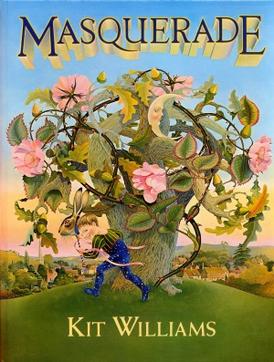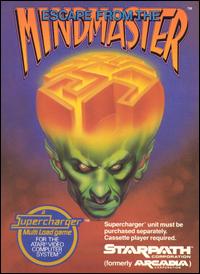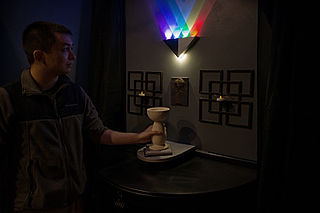
A maze is a path or collection of paths, typically from an entrance to a goal. The word is used to refer both to branching tour puzzles through which the solver must find a route, and to simpler non-branching ("unicursal") patterns that lead unambiguously through a convoluted layout to a goal. The term "labyrinth" is generally synonymous with "maze", but can also connote specifically a unicursal pattern. The pathways and walls in a maze are typically fixed, but puzzles in which the walls and paths can change during the game are also categorised as mazes or tour puzzles.

A crossword is a word puzzle that usually takes the form of a square or a rectangular grid of white- and black-shaded squares. The goal is to fill the white squares with letters, forming words or phrases that cross each other, by solving clues which lead to the answers. In languages that are written left-to-right, the answer words and phrases are placed in the grid from left to right ("across") and from top to bottom ("down"). The shaded squares are used to separate the words or phrases.
A cryptic crossword is a crossword puzzle in which each clue is a word puzzle. Cryptic crosswords are particularly popular in the United Kingdom, where they originated, Ireland, Israel, the Netherlands, and in several Commonwealth nations, including Australia, Canada, India, Kenya, Malta, New Zealand, and South Africa. Compilers of cryptic crosswords are commonly called "setters" in the UK and "constructors" in the US. Particularly in the UK, a distinction may be made between cryptics and "quick" crosswords, and sometimes two sets of clues are given for a single puzzle grid.
A puzzle is a game, problem, or toy that tests a person's ingenuity or knowledge. In a puzzle, the solver is expected to put pieces together in a logical way, in order to arrive at the correct or fun solution of the puzzle. There are different genres of puzzles, such as crossword puzzles, word-search puzzles, number puzzles, relational puzzles, and logic puzzles. The academic study of puzzles is called enigmatology.

Nonograms, also known as Hanjie, Paint by Numbers, Picross, Griddlers, and Pic-a-Pix, and by various other names, are picture logic puzzles in which cells in a grid must be colored or left blank according to numbers at the side of the grid to reveal a hidden pixel art-like picture. In this puzzle type, the numbers are a form of discrete tomography that measures how many unbroken lines of filled-in squares there are in any given row or column. For example, a clue of "4 8 3" would mean there are sets of four, eight, and three filled squares, in that order, with at least one blank square between successive sets.

Kakuro or Kakkuro or Kakoro is a kind of logic puzzle that is often referred to as a mathematical transliteration of the crossword. Kakuro puzzles are regular features in many math-and-logic puzzle publications across the world. In 1966, Canadian Jacob E. Funk, an employee of Dell Magazines, came up with the original English name Cross Sums and other names such as Cross Addition have also been used, but the Japanese name Kakuro, abbreviation of Japanese kasan kurosu, seems to have gained general acceptance and the puzzles appear to be titled this way now in most publications. The popularity of Kakuro in Japan is immense, second only to Sudoku among Nikoli's famed logic-puzzle offerings.

Masquerade is a picture book, written and illustrated by Kit Williams and published in August 1979, that sparked a treasure hunt by including concealed clues to the location of a jewelled golden hare that had been created and hidden somewhere in Britain by Williams. The book became the inspiration for a genre of books known today as armchair treasure hunts.

A scavenger hunt is a game in which the organizers prepare a list defining specific items, which the participants seek to gather or complete all items on the list, usually without purchasing them. Usually participants work in small teams, although the rules may allow individuals to participate. The goal is to be the first to complete the list or to complete the most items on that list. In variations of the game, players take photographs of listed items or be challenged to complete the tasks on the list in the most creative manner. A treasure hunt is another name for the game, but it may involve following a series of clues to find objects or a single prize in a particular order.
Perplex City was an alternate reality game created by the London-based developer Mind Candy under the direction of the lead producer and designer, Adrian Hon, that ran from April 2005 to February 2007. The first "season" of the game had players looking for "The Receda Cube", a priceless scientific and spiritual artifact to the people of a fictional metropolis known as "Perplex City", which had been stolen and buried somewhere on Earth.
Games World of Puzzles is an American games and puzzle magazine. Originally the merger of two other puzzle magazines spun off from its parent publication Games magazine in the early 1990s, Games World of Puzzles was reunited with Games in October 2014.

Escape from the MindMaster was a video game for the Starpath Supercharger addon for the Atari 2600 published in 1982 by Starpath.
A maze is a type of puzzle that consists of a complex branching passage through which the solver must find a route.

The Eternity puzzle is a tiling puzzle created by Christopher Monckton and launched by the Ertl Company in June 1999. It was marketed as being practically unsolvable, with a £1 million prize on offer for whoever could solve it within four years. The prize was paid out in October 2000 for a winning solution arrived at by two mathematicians from Cambridge. A follow-up prize puzzle called Eternity II was launched in 2007.

Treasure Quest is a puzzle game released by Sirius Entertainment on April 10, 1996.

The Eternity II puzzle is an edge-matching puzzle launched on 28 July 2007. It was developed by Christopher Monckton and marketed and copyrighted by TOMY UK Ltd as a successor to the original Eternity puzzle. The puzzle was part of a competition in which a $2 million prize was offered for the first complete solution. The competition ended at noon on 31 December 2010, with no solution being found.
Christopher Manson is a children's book author and illustrator noted for his use of traditional hand tools to painstakingly make the pine woodcuts that fill his several highly acclaimed works.

The Maze of Bones is the first novel of The 39 Clues series, written by Rick Riordan and published September 9, 2008 by Scholastic. It stars Amy and Dan Cahill, two orphans who discover, upon their grandmother Grace's death, that they are part of the powerful Cahill family, whose members constantly fight each other for Clues, which are ingredients to a mysterious serum. The novel has received generally positive reviews. It is set to receive a graphic novel adaptation by Ethan Young in 2023.

An escape room, also known as an escape game, puzzle room, exit game, or riddle room is a game in which a team of players discover clues, solve puzzles, and accomplish tasks in one or more rooms in order to accomplish a specific goal in a limited amount of time. The goal is often to escape from the site of the game. Most escape games are cooperative but competitive variants exist. Escape rooms became popular in North America, Europe, and East Asia in the 2010s. Permanent escape rooms in fixed locations were first opened in Asia and followed later in Hungary, Serbia, Australia, New Zealand, Russia, and South America.

Exit is an American game show on Syfy that premiered on June 4, 2013.

Shadowmatic is a puzzle game developed and published by Armenian indie studio Triada Studio Games. Shadowmatic is a puzzle where the player rotates abstract objects in a spotlight to find recognizable silhouettes in projected shadows, relevant to the surrounding environment. The project is focused on delivering photorealistic graphics across iOS devices, combined with a challenging and relaxing gameplay. Shadowmatic was released on January 15, 2015 for iOS. The game won a 2015 Apple Design Award for the attention to detail, high-fidelity rendering, excellent execution, and perfect representation of multi-touch gameplay.













